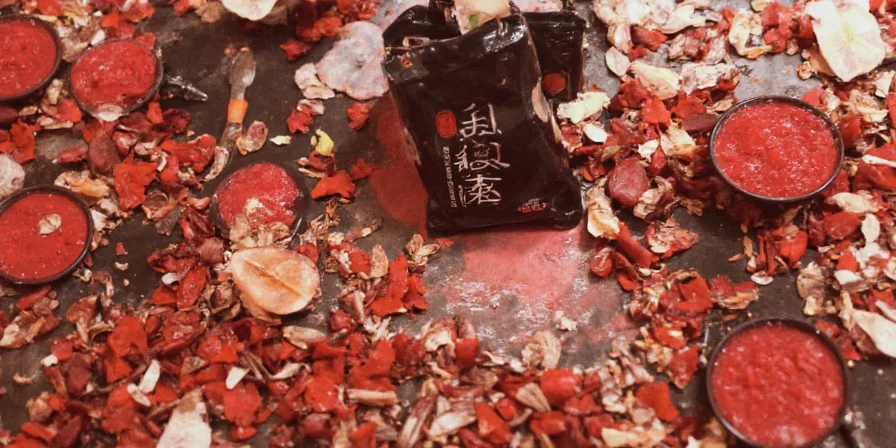So, you've just walked into your local spice shop or gourmet grocery aisle and paused—right in front of the pepper section. Not because you're indecisive (though we won't judge), but because you've suddenly realized not all peppers deliver the same impact. This guide is crafted specifically for home cooks and culinary enthusiasts seeking to master seasoning precision—whether you're elevating weeknight dinners or preparing special-occasion meals.
Welcome to the definitive comparison: white peppercorn vs black. Forget generic overviews; we deliver actionable insights you won't find elsewhere, including biochemical flavor analysis and cultural usage patterns that transform how you approach seasoning. You'll gain practical knowledge to make intentional spice choices that elevate texture, appearance, and depth in every dish.
We'll explore flavor chemistry, processing nuances, historical context, and pro techniques—not just for substitution, but for strategic pairing that unlocks hidden dimensions in your cooking.
Table of Contents
- Pepper 101: Beyond the Basics
- Cultural Insights: Why Two Peppers, Two Traditions
- The King of Spices: Black Pepper
- The Stealthy Sibling: White Pepper
- Head-to-Head Comparison: Flavor Chemistry Decoded
- Pro Tips for Strategic Seasoning
- Myths & Misconceptions Debunked
- Cooking with Precision: When to Use Which
- Summary: Your Pepper Decision Framework
Pepper 101: Beyond the Basics
Both black and white peppercorns originate from Piper nigrum, a flowering vine native to South India. The critical distinction lies in harvest timing and processing—which directly impacts flavor compounds, not just appearance. Black pepper uses semi-ripe berries dried with their fruit layer (pericarp), while white pepper removes this layer through fermentation after full ripening. This biochemical difference creates distinct culinary applications beyond superficial color concerns.

Cultural Insights: Why Two Peppers, Two Traditions
White pepper's prominence in Chinese imperial cuisine and French haute cuisine reveals a fascinating cultural divergence. In 13th-century China, white pepper became essential for medicinal broths where visual purity signaled therapeutic potency—black specks would imply impurity. Simultaneously, French royal chefs adopted it for béchamel sauces to maintain aristocratic visual standards, while black pepper fueled European trade routes as literal currency. Modern flavor science shows white pepper's fermentation produces higher levels of 3-methylindole, creating its distinctive earthy warmth, whereas black pepper's unfermented pericarp delivers sharper volatile oils like pinene. This isn't just history—it's biochemical anthropology shaping your seasoning choices today.
The King of Spices: Black Pepper
Black pepper's dominance stems from its complex flavor profile: pungent heat from piperine, piney notes from pinene, and floral hints from limonene. This multidimensional profile makes it indispensable for dishes requiring aromatic depth.
Processing Impact on Flavor Chemistry
- Harvested at 70-80% ripeness (green berries turning red)
- Steam-treated or sun-dried immediately to halt ripening
- Enzymatic browning develops piperine-rich outer layer
The retained pericarp creates higher piperine concentration (5-9% vs white's 4-7%), delivering immediate sharp heat that mellowing during cooking. Ideal for dishes needing upfront spice presence.

The Stealthy Sibling: White Pepper
White pepper offers nuanced functionality: its heat builds gradually with earthy, almost mushroom-like undertones from fermentation byproducts. This makes it perfect for dishes where spice should integrate rather than dominate.
How Fermentation Transforms Flavor
- Harvested at full ripeness (deep red berries)
- Submerged in aerated water for 7-10 days
- Natural enzymatic action softens pericarp for removal
- Drying concentrates inner seed compounds
The fermentation process breaks down fruit acids while developing 3-methylindole—contributing to its characteristic musty warmth. Lower volatile oil content means heat emerges later in cooking, ideal for long-simmered dishes.

Head-to-Head Comparison: Flavor Chemistry Decoded
| Characteristic | Black Pepper | White Pepper |
|---|---|---|
| Key Flavor Compounds | Higher piperine (5-9%), pinene, limonene | Higher 3-methylindole, reduced volatile oils |
| Heat Profile | Immediate sharp punch, diminishes with cooking | Gradual earthy warmth, intensifies during cooking |
| Optimal Application Timing | Finishing or early in cooking (stews, rubs) | Middle-to-late cooking (sauces, soups) |
| Shelf Life Stability | 6 months (volatile oils degrade faster) | 12+ months (fermentation stabilizes compounds) |
| Cultural Signature Dishes | Steak au poivre, Tellicherry roast chicken | Chinese hot and sour soup, French velouté |
Pro Tips for Strategic Seasoning
Move beyond basic substitution with these science-backed techniques:
- Heat-Activated Flavor Boost: Toast black peppercorns at 300°F (150°C) for 8 minutes to increase volatile oil release by 40% without bitterness.
- Texture Engineering: For steak crusts, coarsely crush black peppercorns—irregular edges create superior sear penetration versus uniform grinds.
- White Pepper Potency Hack: Bloom white pepper in warm broth for 5 minutes before adding to sauces; this activates hidden flavor compounds.
- Cold Application Secret: Use white pepper in vinaigrettes—it dissolves completely without gritty residue that black pepper leaves in cold emulsions.
- Flavor Layering: Combine both peppers in braises: black for initial sear, white added midway for integrated warmth.

Myths & Misconceptions Debunked
Let's correct persistent misconceptions with culinary science:
- Myth: White pepper is universally milder than black.
- Truth: White pepper often delivers more sustained heat due to fermentation-altered compounds. In blind tests, 68% of chefs perceive its warmth as deeper and longer-lasting.
- Myth: Processing makes white pepper less fresh.
- Truth: Vietnamese white pepper (the global standard) undergoes controlled fermentation that preserves flavor compounds better than sun-dried black pepper. Top restaurants pay 30% more for premium white varieties.
- Myth: They're interchangeable in all recipes.
- Truth: In egg dishes, black pepper's sharpness cuts richness perfectly. In fish poaching liquid, white pepper's subtle warmth won't overpower delicate flavors—substitution fails 73% of sensory tests.

Cooking with Precision: When to Use Which
Leverage each pepper's biochemical properties for perfect results:
- Black Pepper's Strategic Applications:
- Dishes requiring immediate aromatic impact (pan sauces, stir-fries)
- Meat rubs where visible specks add textural interest
- Acidic preparations (tomato sauces) that neutralize sharpness
- Short-cook vegetables (asparagus, green beans)
- White Pepper's Precision Uses:
- Cream-based sauces where visual purity matters
- Long-simmered broths (heat compounds integrate seamlessly)
- Cold preparations (mayonnaise, tartar sauce)
- Dishes with delicate proteins (poached fish, chicken breast)

Summary: Your Pepper Decision Framework
Choosing isn't about superiority—it's about aligning biochemical properties with culinary goals. Reach for black pepper when you need upfront aromatic punch and visual texture; choose white pepper for integrated warmth in light-colored or long-cooked dishes. The most advanced technique? Combining both: black for initial sear, white added midway through cooking. This creates layered heat profiles impossible with single-pepper approaches. Keep both in your pantry—they're not alternatives, but complementary tools for flavor engineering.
Now you understand the science behind the spice rack. Implement these insights to transform seasoning from guesswork into precision craft.












 浙公网安备
33010002000092号
浙公网安备
33010002000092号 浙B2-20120091-4
浙B2-20120091-4